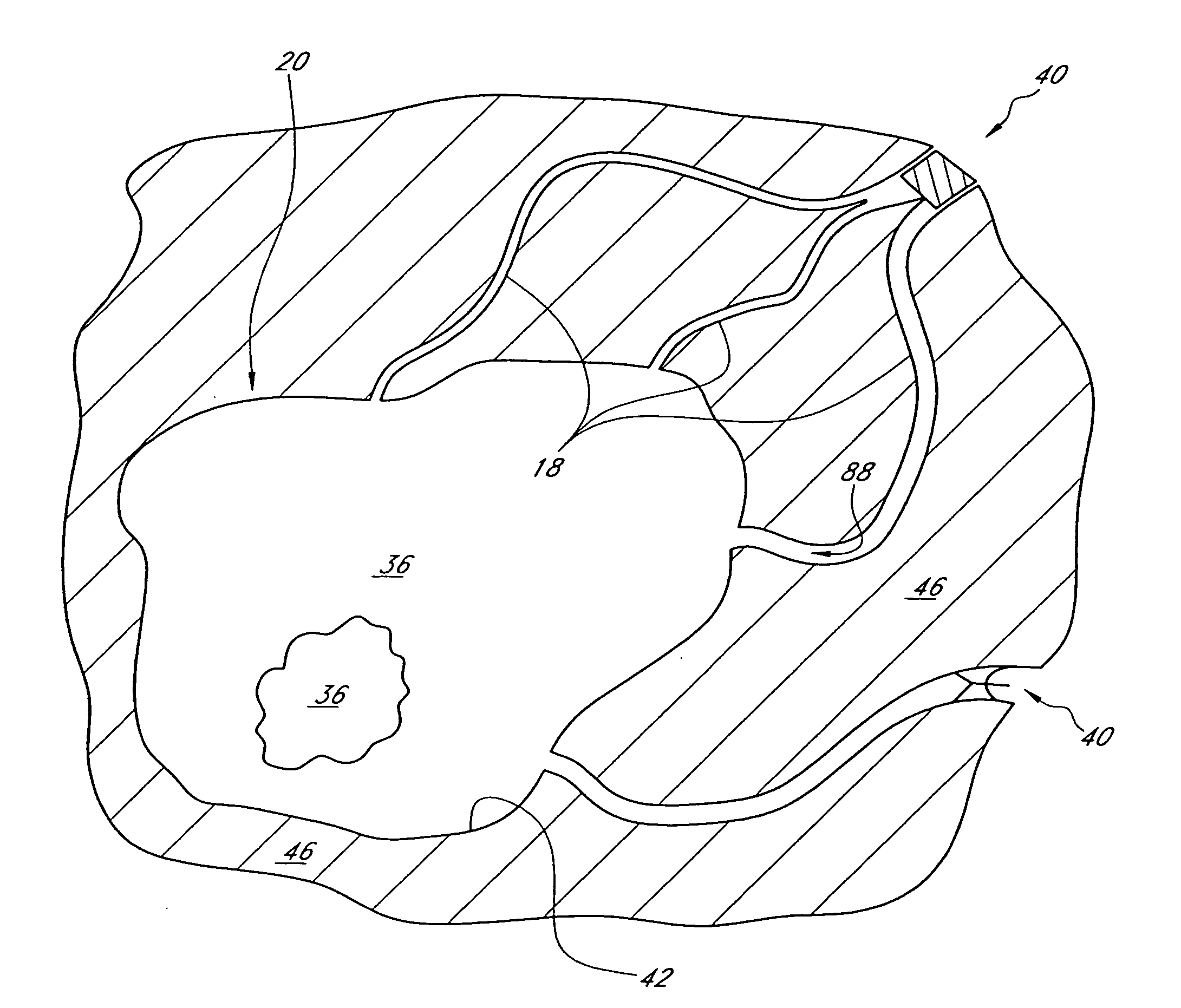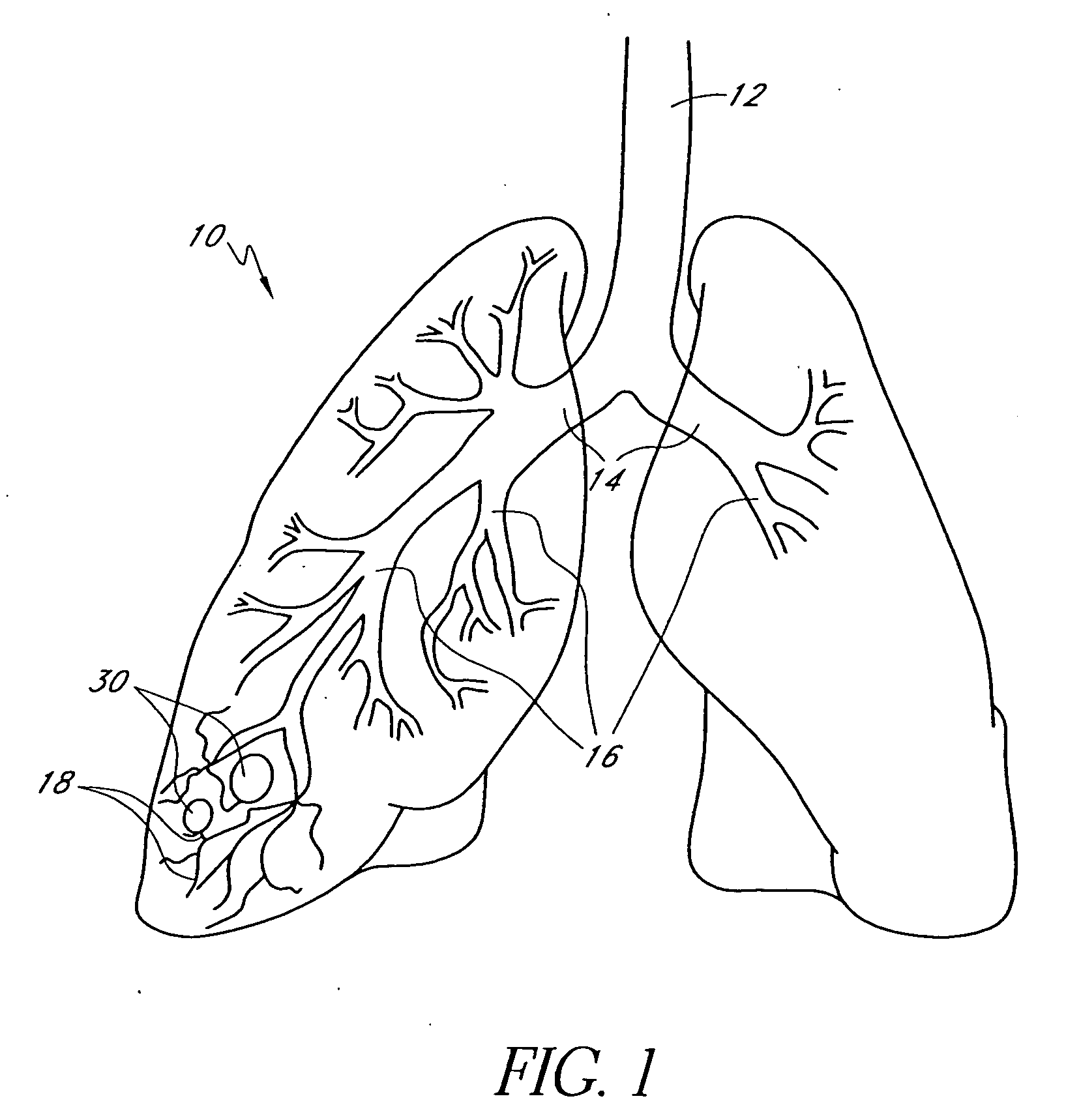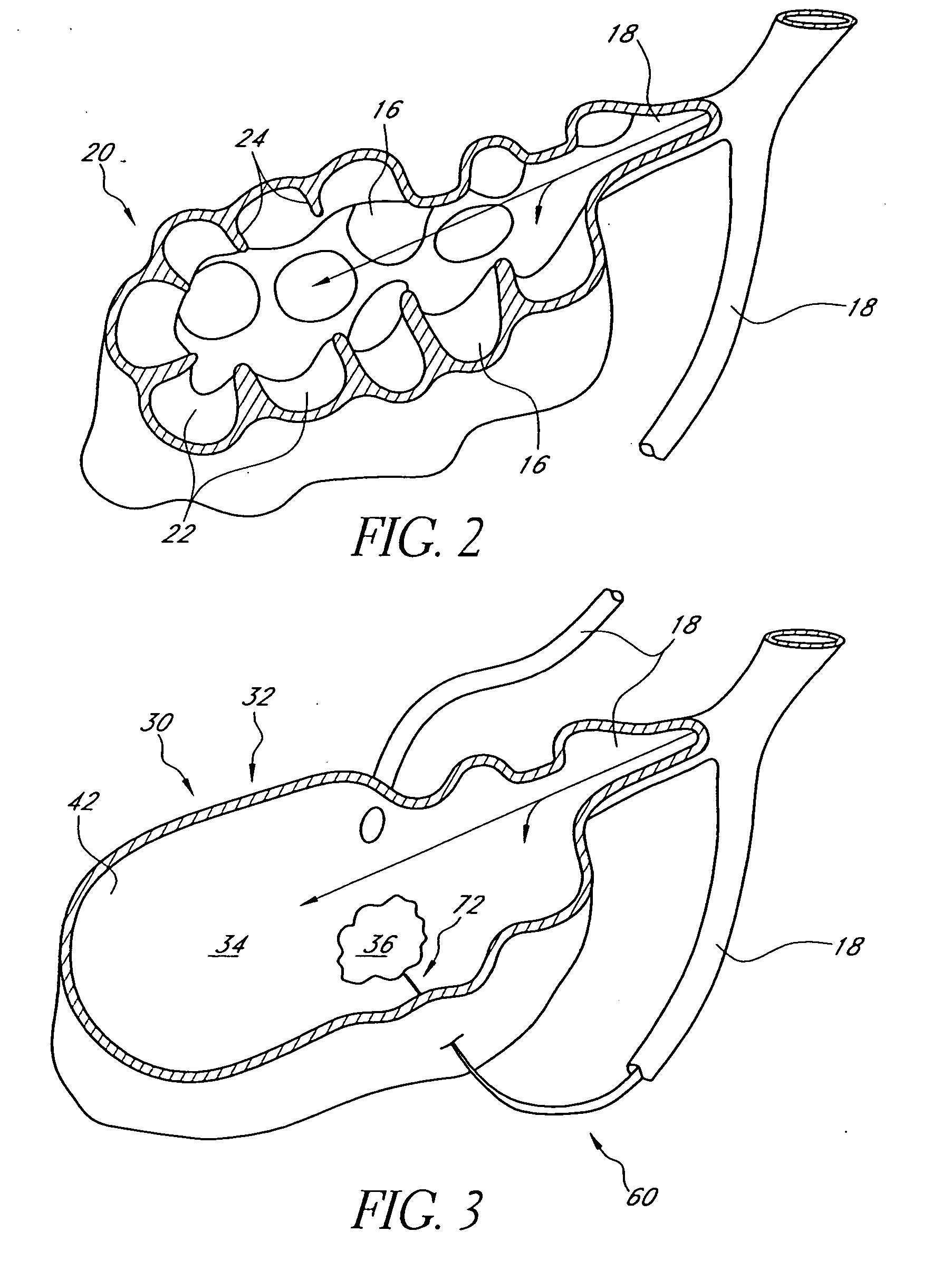Bronchoscopic lung volume reduction method
a lung volume and bronchial tube technology, applied in the field of lung disease treatment, can solve the problems of reducing lung function and efficiency, reducing the supportive structure of the airway, and losing the ability to remain open during exhalation, so as to reduce the risk of reinflation and achieve effective lung volume reduction
- Summary
- Abstract
- Description
- Claims
- Application Information
AI Technical Summary
Benefits of technology
Problems solved by technology
Method used
Image
Examples
Embodiment Construction
[0021] The methods described herein involve minimally invasive procedures for reducing the volume of a diseased target region of a patient's lung. Referring to FIGS. 1 and 2, airflow in a lung 10 to be treated generally follows a path from the trachea 12, through the main branch bronchial tubes 14, then through the sub-bronchial tubes 16 to the numerous tiny bronchioles 18. The bronchioles 18 lead to alveolar sacs 20 which include multiple alveoli 22 separated by alveolar walls 24 for the exchange of oxygen and carbon dioxide. In lungs suffering from emphysema, the alveolar walls 24 are deteriorated, thus leaving a number of large open spaces or cavities 30. Often, the largest of such cavities 30 will be chosen as a target region 32 for volume reduction first, although the specific regions to be reduced will be chosen by a clinician based on a number of factors. A target region 32 of diseased lung to be reduced in volume will generally include at least one enlarged target cavity 34....
PUM
 Login to View More
Login to View More Abstract
Description
Claims
Application Information
 Login to View More
Login to View More - R&D
- Intellectual Property
- Life Sciences
- Materials
- Tech Scout
- Unparalleled Data Quality
- Higher Quality Content
- 60% Fewer Hallucinations
Browse by: Latest US Patents, China's latest patents, Technical Efficacy Thesaurus, Application Domain, Technology Topic, Popular Technical Reports.
© 2025 PatSnap. All rights reserved.Legal|Privacy policy|Modern Slavery Act Transparency Statement|Sitemap|About US| Contact US: help@patsnap.com



